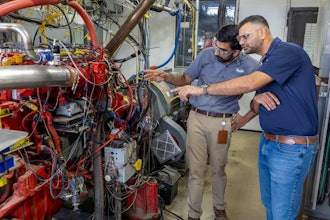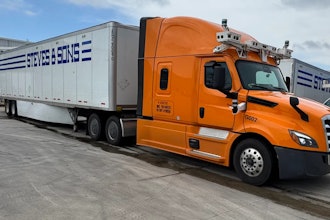
Market resiliency will be a defining factor for manufacturing success in 2024. Increased competition, new industry regulations, and ever-growing customer expectations will see forward-thinking manufacturers turn to new technologies to optimize operations and increase their competitive differentiation. This article outlines four predictions on how manufacturers can create more resilient supply chains with a helping hand from AI.
1. Manufacturers Turn to AI Pattern Recognition Tools
In just a few years, AI spending in IT is expected to rise by 40 percent. This rise in investment will help manufacturers improve efficiency through AI data pattern recognition. By using historical data, AI swiftly analyses real-time production data, identifying patterns and anomalies. The long-term value of AI and data pattern recognition will provide manufacturers with ongoing root cause analysis, streamlining work, and predicting potential product quality issues by comparing various data points.
As manufacturing systems become more complex, AI-driven data pattern recognition is crucial for sharpening quality control, predicting equipment issues, and optimizing production for fewer defects, higher OEE, and significant cost savings. With Industry 4.0 and the emerging Industry 5.0, there will be too much data being generated every second for the human mind to cope with—AI will become an indispensable tool for manufacturers.
2. Smart Integrations Lead to a Move from Static Planning
The traditional static planning approach is no longer sufficient for modern manufacturing. According to a McKinsey report, using AI pattern recognition tools can lead to a four percent increase in revenue, up to a 20 percent reduction in inventory, and a decrease in supply chain costs by up to 10 percent. Recent IFS research has shown that manufactures continue to face ongoing supply chain challenges.
However, by leveraging AI, ERP, and EAM technologies, manufacturers can optimize their inventory with real-time machine data. With the addition of AI-powered tools, manufacturers will have the ability to respond swiftly to demand shifts, supply chain disruptions, and market changes. For example, using AI embedded within ERP systems, manufacturers will be able to swiftly adapt to unexpected raw material changes, predicting potential supplier delays. By doing so, manufacturers can enhance their adaptability, reduce lead time, and minimize the impact of supply chain disruption for efficient production.
3. The Connected Worker Resolves Pain Points
The manufacturing industry is facing a talent crisis so deep it could threaten its growth and recovery. In the U.S. alone, the manufacturing industry is expected to have 2.1 million unfilled jobs by 2030. Aging workforces and changing behaviors are key causes of this talent crisis. Workers increasingly expect more flexibility and other non-monetary rewards, a phenomenon likely accelerated by the COVID-19 pandemic. Meanwhile, increasing employee turnover has significantly disrupted shop floor productivity, schedules and workflows.
However, as highlighted in a recent IFS Customer Advisory Board meeting, “capturing the right skills is only half the battle. Training and retaining talent is the bigger one.” Moreover, new hires may not be as efficient or experienced as departing employees, resulting in lower productivity and potential quality issues.
To address this, manufacturers have called for the integration of technology to improve productivity. Indeed, a recent study has shown that almost two-thirds (62 percent) of employees could get more work done if they had better tech tools, with more than half (58 percent) claiming that their technology needs have increased in the last five years.
An IDC study commissioned by IFS revealed that 45 percent of manufacturers have made it a priority to augment the worker experience with the help of technology. Embedding technology by involving workers in the process—a concept also known as the ‘connected worker’—will enable manufacturers to drive productivity, efficiency, and improve the shop floor worker experience.
Utilizing connected worker technology and digital collaboration has the potential to unlock more than $100 billion in value for the manufacturing industry. In addition, it could lead to productivity boosts of 20-30 percent within intensive work processes. As people remain a company’s most critical asset, connected worker tools and platforms can enhance engagement, boost productivity, and improve job satisfaction—driving competitive differentiation. In the future, AI will also play an important role in further empowering the connected worker by providing insight and accuracy to improve efficiency.
4. Circularity Becomes a must for manufacturers to cut down on unnecessary waste
It’s becoming increasingly evident that manufacturers’ “take-make-waste” linear business models have become unsustainable, unpopular, and exposed to more business risk.
Nealy half of global manufacturers are worried about the lack of key supplies, with the same percentage expressing concerns about the increasing costs for raw materials. To reduce the dependence on the availability and cost volatility of raw materials and make their business more resilient in the future, manufacturers must rethink their existing business models to embrace circularity.
Meanwhile, Bain & Consulting found that 33 percent of executives expect their industry to be disrupted by circularity start-ups that put products or materials back into the supply chain. By re-using materials over and over again, companies not only create resilience through a decreased dependence on virgin materials, but also yield more profitability out of the same product.
For manufacturers, there is increasing urgency surrounding the circularity as the regulatory landscape and circular economy policies evolve. These already are, or shortly will, have a profound impact on the ways manufacturers can operate, both in the near and long term. As various regulations come to fruition, such as the SEC disclosure requirement, the transition to the circular economy has been accelerated.
To ensure manufacturers are prepared for their transition to a circular business model, they need to be enabled by the right technology. Approximately 80 percent of all product-related environmental impacts are determined during the design phase of a product. At this stage, manufacturers need to think about the choice of their suppliers, but also how redesigning their products them can make them easier to disassemble, repair, and recycle.
Going further, the industry at large needs the ability to handle returns and incorporate reverse logistics. This is a strategy that Gartner recognizes as a key engine to drive circularity strategies. Using a circular business model, reverse logistics allows manufacturers to return goods at their end-of-life, creating an efficient flow of goods and reducing waste.
Finally, traceability is another key capability needed for circularity, as it enables manufacturers to track and trace materials, parts, and products throughout their lifecycle. That way, manufacturers never lose sight of a product’s journey and environmental impact.
Manufacturers are all too familiar with navigating complex market challenges and, as an industry, a resiliency to adapt traditional processes with the help of technology has been key to survival. Moving into 2024 and beyond will take some adjustments, as it will be up to forward-thinking manufacturers to focus on enhancing efficiency and optimizing operations in order to maintain a competitive edge.






















